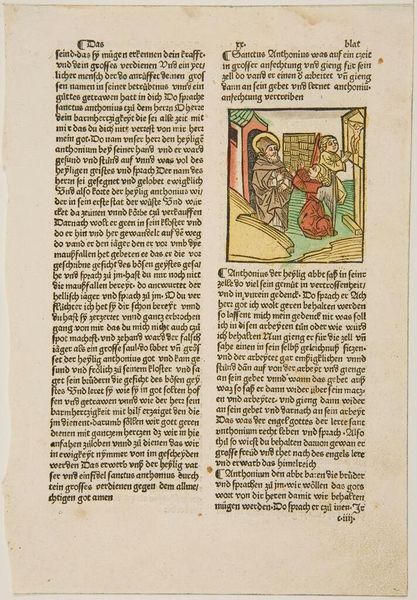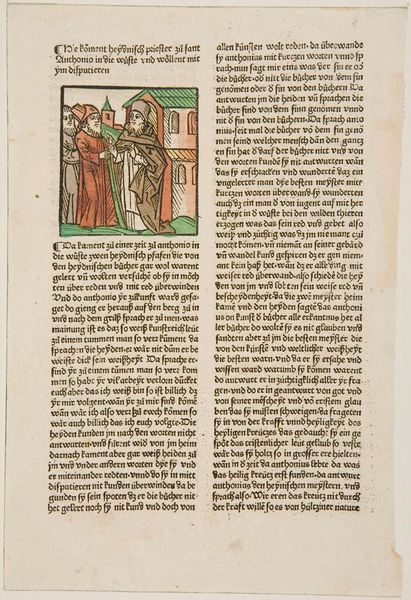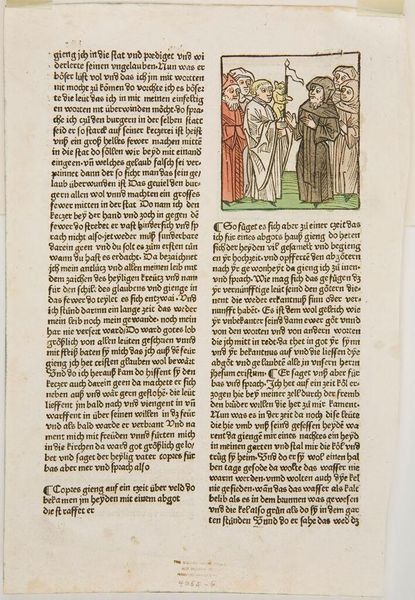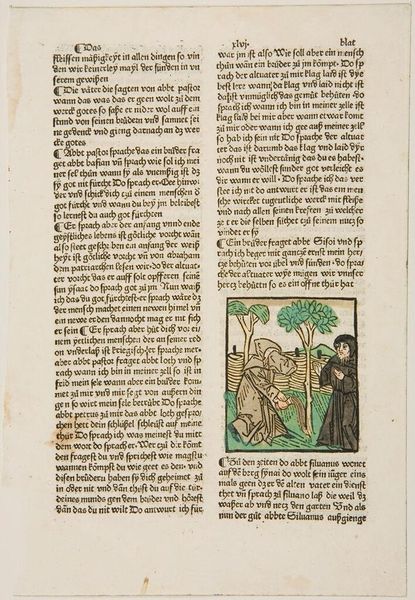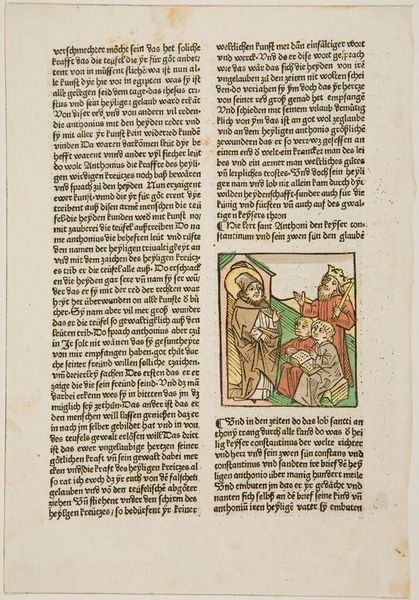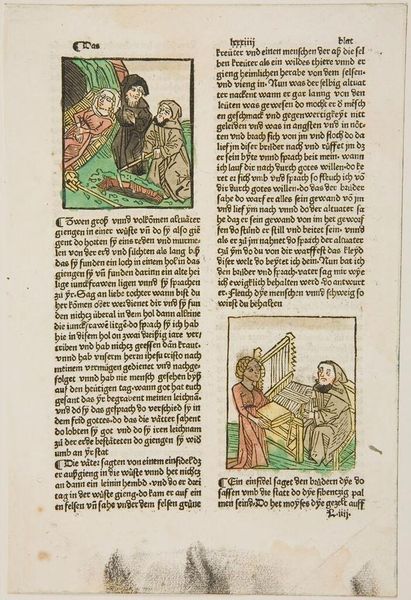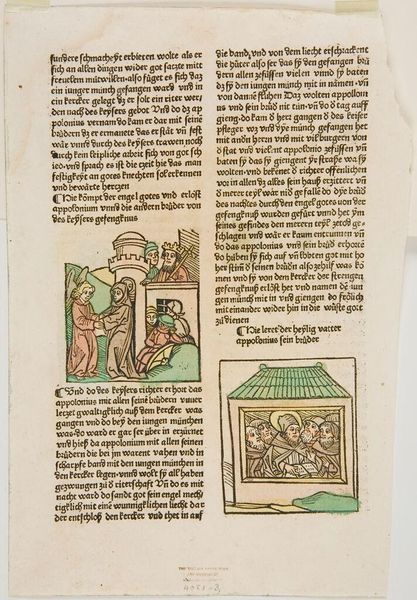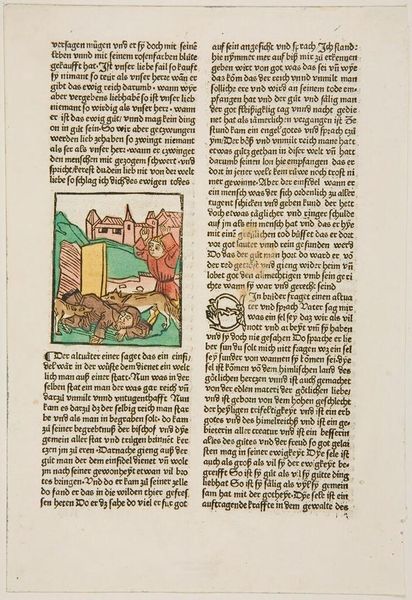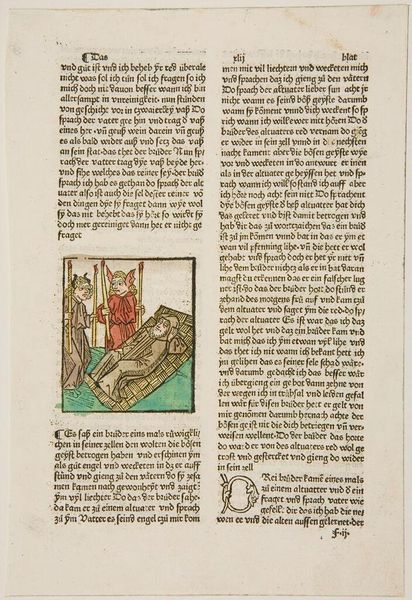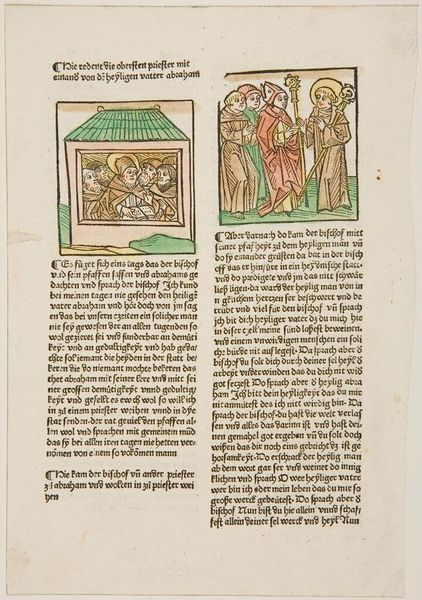
Copyright: CC0 1.0
Curator: Here we have an intriguing, unsigned woodcut titled “Friar in his Cell," held within the Harvard Art Museums collection. The exact date remains unknown. Editor: Immediately, I'm struck by the composition's starkness. The monochromatic palette, punctuated by small blocks of color, lends it a contemplative, almost austere mood. Curator: Indeed. Let’s consider this work’s historical context. Woodcuts like these were often used in early printed books during the 15th and 16th centuries as a means of illustrating religious texts. The friar, situated in a sparsely furnished cell, emphasizes the monastic values of simplicity and devotion. Editor: I agree. The cell could also represent a kind of gendered and racial confinement, even a broader metaphor for institutional power. The friar looks like he is reading a religious text, perhaps the very text we see reproduced on the page surrounding this illustration. This presents a certain level of complicity for the friar, as the texts were not necessarily innocuous. Curator: That's a compelling point, one that adds layers of complexity to our interpretation. Editor: Precisely. It urges us to consider the multifaceted power dynamics that existed then and that are still relevant now.
Comments
No comments
Be the first to comment and join the conversation on the ultimate creative platform.
